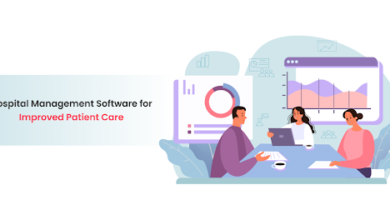Strategic Role of DevOps in Quality Assurance

DevOps is being accepted by IT industries to satisfy the continuous business demands, to improve the new IT solutions, and to give delivery to customers and end-users at an ever-increasing speed.
The core idea behind DevOps is to eliminate the boundaries between the conventional business silos, QA, IT operations and to expand the lean-principles and agile from software development to the software deployment phase. This will help end-users get the IT updates in a continuous stream.
The growth of DevOps has accelerated by business metrics, such as Return on Investment and Return on Revenue, with time to market for new development and workload efficiency gains for legacy systems.
To acquire the benefits from the promising DevOps, automation of the qualities activities is the key enabler to boost velocity and throughput.
The Key Characteristics of a Successful DevOps
- Business speed to market and business agility create a more link to the agility of IT provisioning.
- Agile methods help identify issues earlier in the life cycle and allow us to give usable product delivery to market in smaller and faster increments. Also, it helps reduce the chances of future risks.
- Since quarterly or even twice-yearly releases are still normal, lengthy release cycles and monolithic legacy structures can rapidly restrict an organization’s ability to adapt to new business processes.
- Future innovations or advancements in testing will help you involve predictive analytics and artificial intelligence to experience the improvements in the automation of delivery.
- Advanced automation tooling and lean processes allow companies to adapt to changes at unimaginable rates.
- Newer and agile solutions offer quick ROI through operational improvements.
DevOps – Who, What, Why, How
- Who – Qa, developers, and operations.
- What (Objective of DevOps) – To understand the changes that each release brings to the IT and customer benefits, there must be continuity, clarity, and collaboration.
- Why (Necessity) – Reduce the transaction cost related to the delivery of incremental change and provide as many business benefits. It ensures stable operating environments, transparency and collaboration across teams, faster correction and early detection of defects. It also assures improved quality, continuous release and deployment, continuous testing and monitoring, faster software delivery.
- How – Tools and methodology that continue to evolve.
Strategic Role of DevOps in QA (Quality Assurance)
Both the developer and the tester play equally essential roles while implementing the DevOps approach. So, it is challenging to describe the job responsibilities for both parties in DevOps.
Everyone in the organization has a responsibility to take care of the stability and quality of products, and therefore help the owner to achieve business success. QA connects development and operations, allowing them to work together to keep the applications and software all-time running.
The developer’s thinking is much more than similar to testers. Developers can check their own code to find out potential errors in the system. However, the tester uses several types of testing tools and methodologies to test the software/application and fix the errors in the code. For continuous testing in DevOps, organizations need to consider a strong and definite QA and testing strategy to meet their goals, mainly if it is the matter of providing delivery to the customer at an accelerated speed.
DevOps teams consider one of the best practices that are CI/CD (Continuous Integration/Continuous Delivery) as the agile methodology to focus on code quality, security, and meeting business requirements.
Apart from that, DevOps teams integrate QA into the testing and development process by choosing the collaborative approach to ensure quality throughout the software testing lifecycle.
In terms of technology creation, the QA team drives new development code into production, while DevOps ensures that infrastructure and resources will be used properly for smooth deployment. As a result, it aids in giving consistency for the release of code and assures that the purpose of providing quality is not limited to eliminate the bug, but also it will be given for the entire application release.
The role of the QA changes according to the customer’s new requirements in the software development process. Sometimes, a disastrous situation comes out in front of companies whenever they try to release new and functional builds.
At that time, ensuring consistent quality throughout the application’s life cycle is not possible. To overcome such issues, one needs to think of automation because it plays a critical role in testing and guarantees to bring speed and quality.
Developing the best QA strategy with desired practices is vital for companies to embrace the DevOps movement.
Using effective QA strategies, one can give the fastest delivery of software development and ensure efficiency for operations to help users get the best level of customer experience.
Thus, Adopting DevOps practice in the QA is essential for reducing the defects and improving the regularity of the releases. It helps to boost short, rapid, iterative development and deployment of applications and give you huge business growth.
Three Aspects That You Need to Know for the Implementation of DevOps
Cultural – adaptability and change are the norms. Development/business/QA and operations should work according to the integrated manner during the software delivery process.
Process: The agile-based process focuses on continuous development (CD), continuous build, continuous integration (CI), continuous testing (CT), continuous deployment, and continuous monitoring.
Tools: One must use automated tools mainly to obtain the necessary pace of delivery while preventing the brand and user’s experience.
DevOps is a sea change for all disciplines: operations, business, development, and quality assurance. All disciplines will integrate and work together to make the DevOps better. There are four factors that you can understand as a part of your DevOps process, infrastructure, and teams to get the highest level of quality:
- Execute an integrated DevOps quality approach.
- Handover the DevOps quality engineer responsibility to DevOps teams.
- Set up an easy-to-use DevOps quality automation framework.
- Provide your team one-click Test Data solution and DevOps test environment.
- Execute an Integrated DevOps Quality Approach
There are seven key principles for implementing an integrated DevOps quality approach:
- zero touches continuous testing and continuous quality monitoring.
- Continuous development based on test-driven development and behavioral-driven development.
- A clear understanding of potential risks and priorities to increase the business performance and to feel your customer’s value.
- Quality indicators per application.
- Flexible quality coverage decision.
- Implement metrics for QA efficiency management.
Various factors that help achieve DevOps with quality are:
- Lean and agile process adoption.
- Lifecycle test automation.
- Continuous testing.
- Test optimization and standardization.
- Test virtualization.
- Continuous monitoring.
- Understanding the role of the quality engineer.
- Handover the DevOps quality engineer responsibility to DevOps teams.
Teams should have multiple skills while working on the DevOps with quality:
- Architecture skills
- Business domain skills
- Native programming language skills
- Infrastructure, virtualization, and cloud skills
- Enterprise-level hybrid agile testing skills
- Non-UI based automation framework skills
- Set up an easy-to-use DevOps quality automation framework.
The improved DevOps process needs more automation and less manual approach for all parts of the process. The most popular tools for quality analysis and quality management in DevOps environments are as follow:
| Components | Indicative Tools |
| Tdd (Test Driven Development) | JUnit, xUnit |
| Exploratory Testing | HPE Sprinter |
| Behavior driven development | JBehave, Cucumber |
| Continuous Integration | Jenkins, TFS |
| Configuration Management | GIT, PVCS, VSS |
| Build automation | Make, GNU make, Apache |
| Test lifecycle and defect management | HPE QC, Rally, VersionOne, Jira |
| Service automation | Parasoft, HPE Service Test, CA Lisa |
| Functional automation | HPE QTP, HPE UFT, Selenium |
| Performance test | HPE Loadrunner |
| Continuous Monitoring | Application, Server, Database Monitors |
| Environment virtualization & Cloud leverage | Puppet, Chef, VM ware , HPE Codar |
| Test Data Management | IBM Optim, Parasoft File-Aid |
- Utilize a virtualized environment to validate DevOps quality
It is necessary to use any flexible DevOps quality validation environment because it provides the right coverage of validation and helps you perform the tasks in a cost-effective and repeated manner. Your environment should be based on three principles:
- Test data management and generation.
- Virtualization of devices, networks, and services.
- Cloud-based environment provisioning.
Final Words to Achieve DevOps with Quality
For organizations that are trying to implement DevOps as per the strategic role in quality assurance should cover all essential elements such as an integrated QA approach with continuous testing and continuous quality monitoring. You must have the expertise and great awareness of QA. You need to assign a quality engineering role in DevOps teams and consider the maximum of QA automation with the QA environment and test data provisioning.
You also have “cost to achieve desired test velocity business cases” with DevOps driven roadmaps and the appropriated lean metrics to fulfill the unique business objectives. Thus, for complex and every day changing application scenarios, there is an urge to use DevOps with a robust QA strategy. It encourages you to speed up the development and ensures accelerated time to market.





